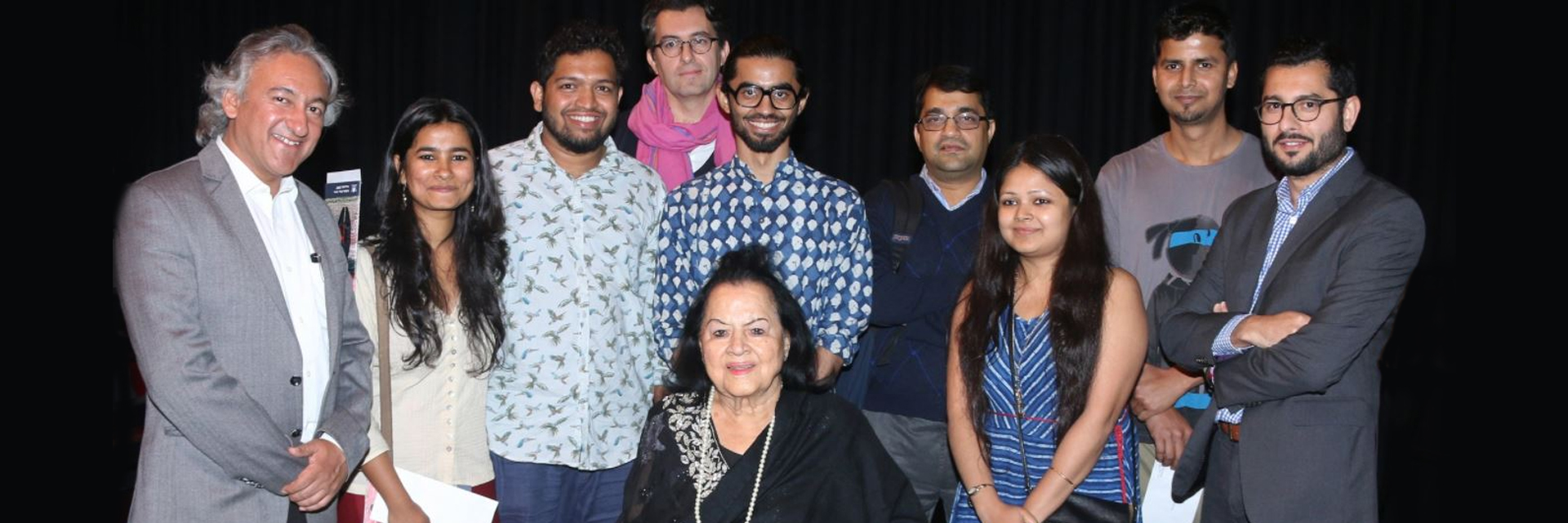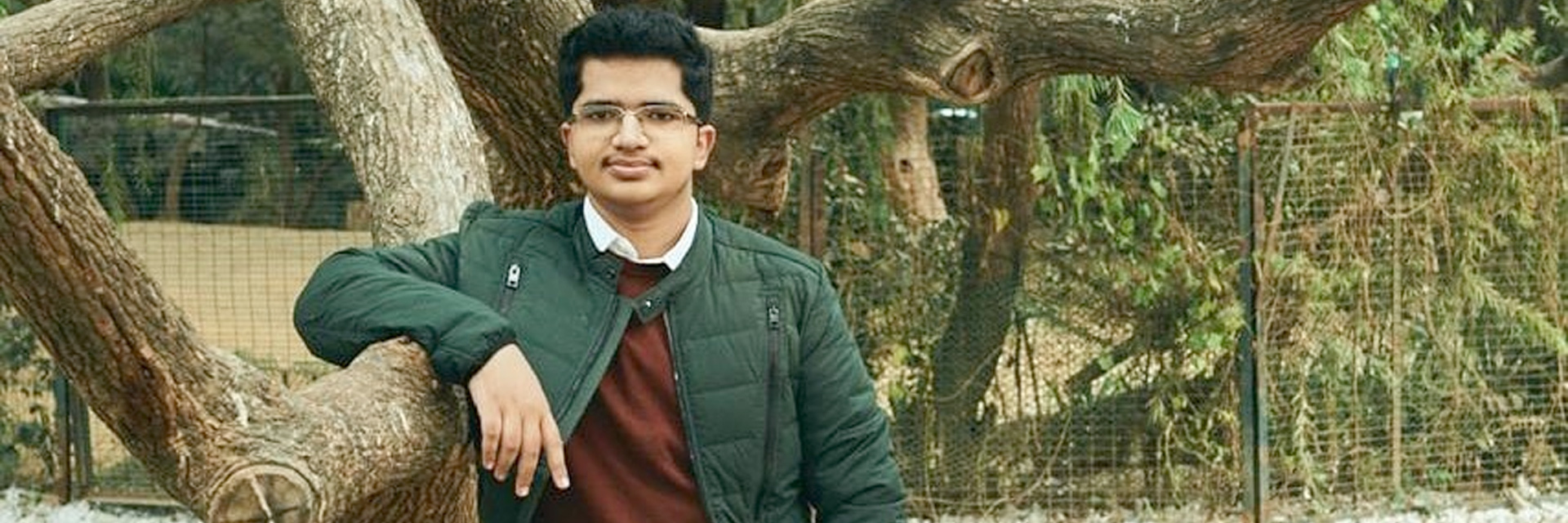(March 29, 2022) Invoking good tidings is an inherent part of Indian culture. The oft-seen delicate rangoli motifs at entrances of homes add artistic ethos which sometimes lie forgotten. This native of Satoli, 12 km from Mukteshwar, saw this lack of regard for an indigenous artform called Aipan, and preserved it for future generations. Hemlata Kabdwal used to see her mother and elder sister delicately tracing Aipan, a ritualistic folk art of Uttarakhand. “Aipan is made at the entrance of every house on auspicious occasions, and festivals. Not content with the artform confined to just our region, I wanted to popularise it far and wide,” says Hemlata Kabdwal in an interview with Global Indian.
Aipan is made by Kumaoni women at the entrance of their homes. The belief is that it invokes a divine power which brings about good fortune and deters evil akin to rangoli.
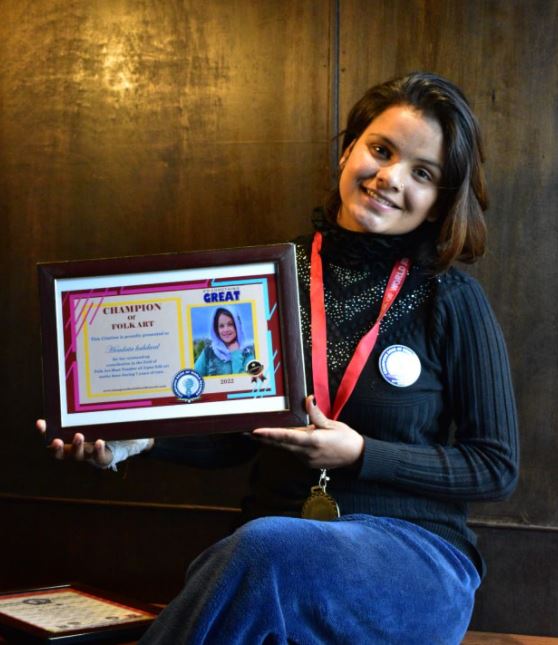
Hemlata Kabdwal, Aipan artist
Hemlata was listed in the Champion Book of World Records for creating the most aipan artifacts. The 22-year-old is also the recipient of the National Women Pride Award from Navbharat Rashtriya Gyanpeeth (2022), a charitable organisation.
“Since we cannot showcase entrances of our homes and temples to highlight the beauty of Aipan, I started experimenting on clothes, bags, diary covers, and key rings to share its beauty,” says the artform’s torchbearer.
Goodness on the way
The stars shone on Hemlata as owner Lokesh Lohani, Woodhouse Farm in Satoli, became captivated with her ideas. His space, a hub for tourists, was a perfect space for what he thought were Hemlata’s good intentions, to set up a gallery. Suddenly, the folk artiste was mesmerising tourists. Actor Manoj Bajpayee, playback singer, Maithili Thakur, and others visited Satoli, discovered Hemlata’s Aipan and were wonderstruck. “My work has a market in Delhi and Mumbai, and it has also reached former union minister, Prakash Javedkar who showered praise too,” smiles the artform torchbearer.
View this post on Instagram
Social media played a big role too, and soon Aipan was being popularised on Facebook, Instagram, etc. Promoting it through training sessions on zoom, she has also conducted a free physical 10-day camp to teach the nuances of Aipan in her district – 70 eager participants joined in to learn. Revenue from orders via social media have been significant, and one particular month, she recalls clocking ₹64,000 too.
Family support played a big role
The class 12 science student slowly turned to a bachelor’s in fine arts despite her family’s initial unhappiness due to meagre career prospects. However, her agriculturist father (whom she lost four years ago) was the first to understand her inclination, and gradually her mother and three siblings followed. As her village didn’t have a college, Himani, as she is fondly called, moved 70 km away to Almora to study BFA. Now in her second-year master’s in fine arts, she says, “All young girls in my village are married off after 18. I am thankful to my family who gave significance to my education and also supported my career choice.” The artform torchbearer feels spreading the word about cultural ethos has more value than just earning money, “Money can come from other sources too, what is more important is to make the culture prosper.”
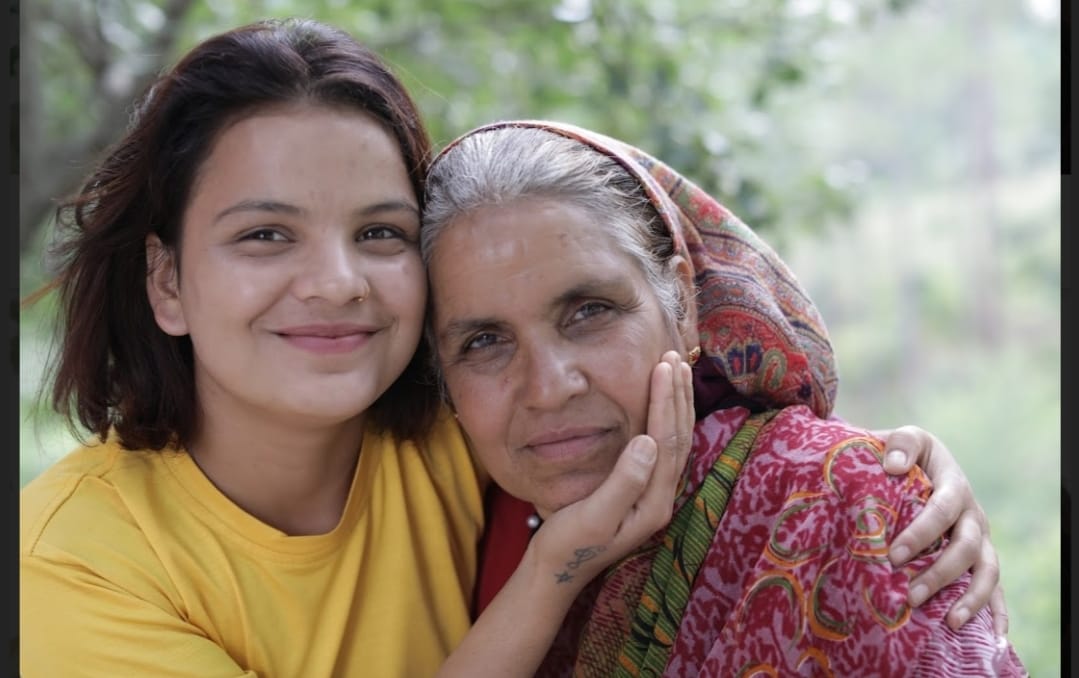

Hemlata with her mother
Aipan never takes a backseat
At Himani’s Almora college, she religiously devotes a couple of hours to Aipan. For her gallery at Satoli, her brothers pitch in during class, but soon, she ambles back to helm it. She never hesitates from spreading the word about her fine arts peers’ artworks to potential customers.
Good gestures have a special place
Hemlata beams recalling the first person who showed interest in her work while she was in school. The tourist even took her Aipan creations back. Chuffed at the idea of her craft getting its own identity across the country, Himani gave it free then. The next time the tourist visited, she was generously gifted colours and tools. Motivated, Aipan soon became her calling.
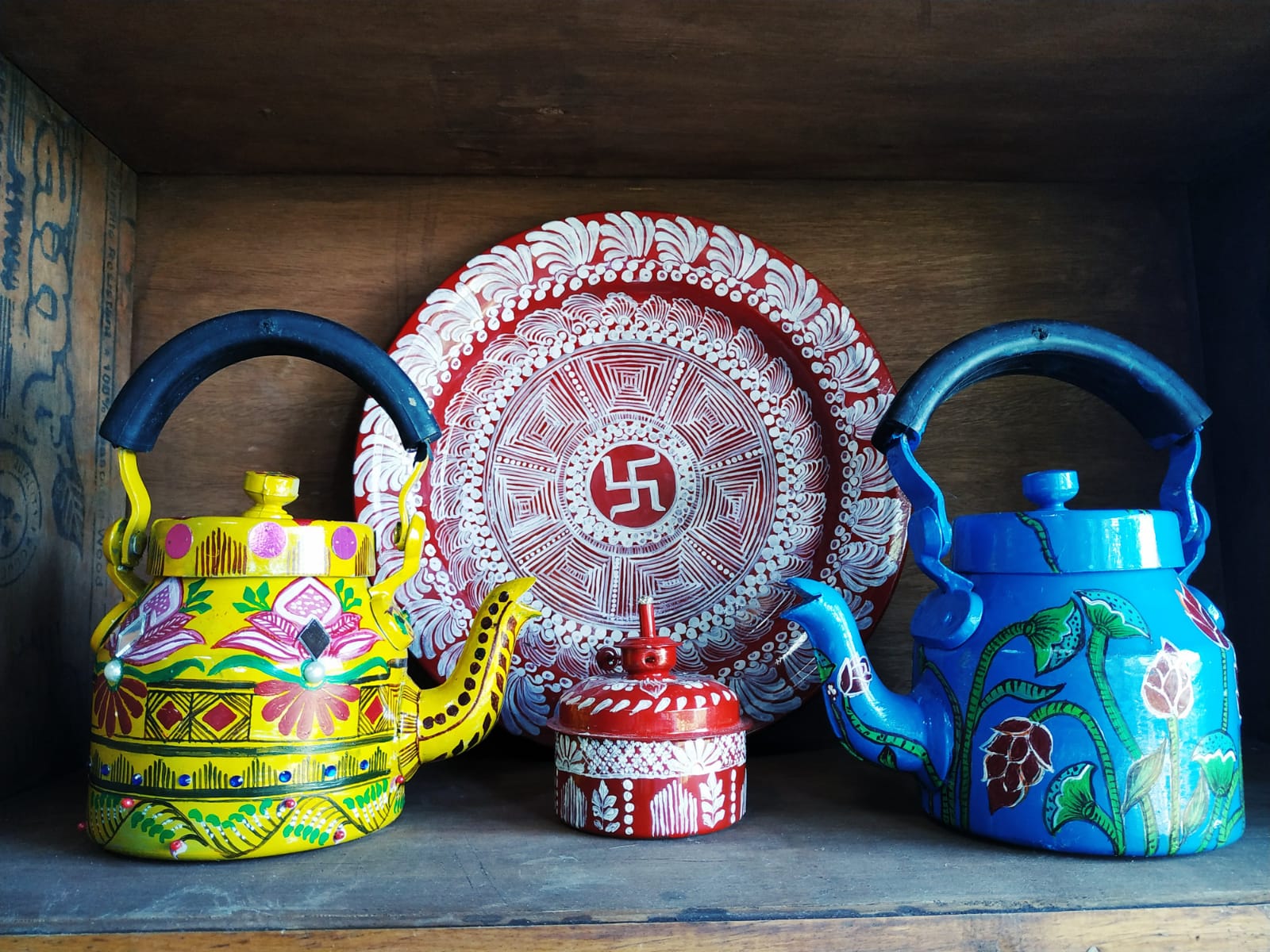

An online connect with Gattam Venkatesh, an artist from Vishakhapatnam who is listed in the Guinness Book of World Records, led her to greener pastures. Venkatesh had approached her for an artwork for his studio, this chance association flourished into a mentorship – How to project oneself and publicise work. Her elder sister is a huge inspiration too.
Come what may…
Himani rues the fact that though her art is appreciated in Delhi and Mumbai, people in her own village take her achievements for granted. “The more they try to hush away my achievements, the more determined I become to take Aipan to greater heights,” chuckles Hemlata. Miffed that copies of her artworks are being sold by fly by night hawkers to tourists, the fact that she has been unable to copyright her art saddens her.
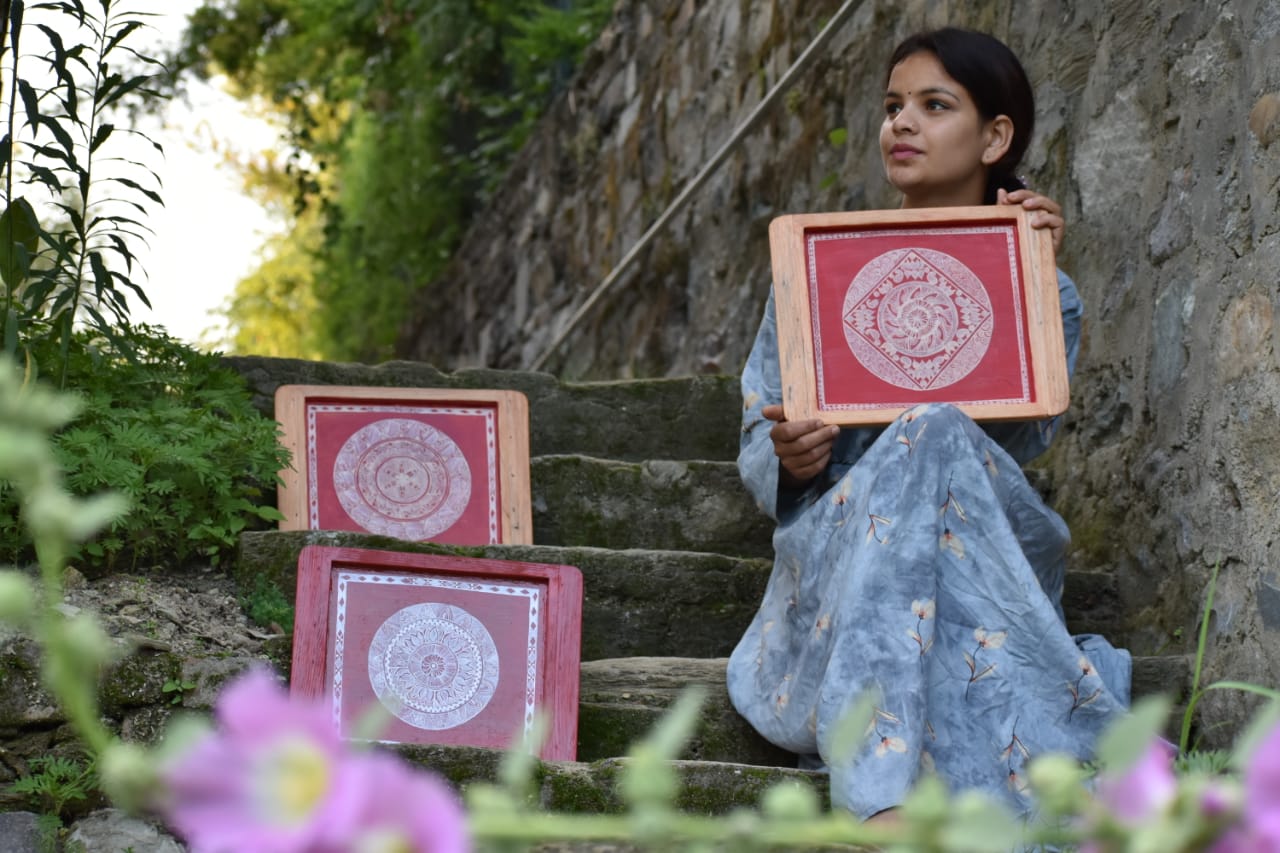

Of course, this also sullies her original work – her artwork priced at ₹8,000 was digitised and sold by a hawker at ₹1,800. “It’s easy to get my creations online, you just type ‘Hemlata,’ you’ll find me,” smiles the artform torchbearer.
Himani wants to do a PhD in fine arts, and dreams of becoming a lecturer. Her second love, animals, inspires her to set up animal rescue centres too. “I had an inclination towards performing in dramas but Aipan took over,” says the unapologetic folk artist.


